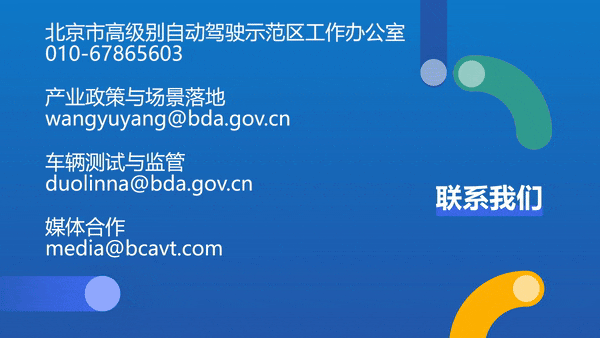
With the acceleration of the intelligent process, smart cars have become mobile computing power centers. Stronger central control and cross-domain integration capabilities have become a trend.
The increasing market demand for cross-domain integration has become a new trend in the automotive industry.
Like a butterfly emerging from its cocoon, cross-domain integration drives automotive technology from decentralization to integration, prompting companies to further deepen their technical capabilities and resource advantages. Especially with the “cockpit and driving integration,” OEMs and component suppliers are gearing up and implementing strategic layouts, aiming to enhance technological competitiveness through cockpit and driving integration.
So, will the demand for cockpit and driving integration from car manufacturers increase rapidly? What unavoidable technical pain points must be overcome in the process of cross-domain integration? How can companies leverage their inherent advantages to better support innovative applications of cross-domain integration?

In response to the above questions, our reporter interviewed technical experts from automotive supply chain companies such as Visteon, Aptiv, Desay SV, Black Sesame Intelligence, SenseTime, and Changan Automobile, exploring the technical pain points and innovative applications of cross-domain integration from different perspectives.
01
Will the demand for cockpit and driving integration from car manufacturers increase rapidly?
Currently, the layout of cross-domain integration and multi-domain computing has become an important strategy for car manufacturers and component suppliers. The cockpit and driving integration domain control solution will bring a safer and smarter driving experience, while the dual-domain control integration can also help car manufacturers achieve development goals in cost optimization and lightweighting.
Visteon:At present, the industry has seen a gradual increase in demand from car manufacturers for cockpit and driving integration, and with the penetration of intelligent driving and parking functions into mid-range and compact models, it is believed that integration solutions with cost advantages will have greater market demand.
From a technical application perspective, Visteon’s SmartCore™ cockpit and driving integration domain control solution is developed based on the Qualcomm Snapdragon 8775/8255 platform, supporting cross-domain integration of intelligent driving and smart cockpit. This domain control solution provides high-performance AI, CPU, GPU, ISP computing processing, flexibly configurable sensor and peripheral interfaces, and ASIL-D level functional safety design, supporting L2/L2+ intelligent driving and parking functions, as well as enabling more natural cockpit interactions and smart travel experiences brought by AI large models.
Aptiv:From the perspective of market demand, car manufacturers’ planning for cross-domain products will show differentiation, reflected in whether to integrate and how to integrate, with each car manufacturer making choices based on their own electronic and electrical architecture planning. However, there is no doubt that cross-domain integration products will inevitably become a significant product category.
From the solution perspective, Aptiv showcased an integrated “cockpit and driving” solution based on a single SoC chip during the 2024 Beijing Auto Show. This was Aptiv’s first domain control product developed based on domestic chips, and the first time Wind River’s operating system was deployed on domestic chips. The Aptiv and Wind River teams first used LXC container technology to deploy smart cockpit and smart driving on a single SoC, realizing Aptiv’s core technical vision for cross-domain integration products and laying a solid foundation for the rapid landing and mass production of cross-domain integration products.
02
How to overcome the technical pain points in the process of cross-domain integration?
Cross-domain integration is not an easy task; integrating and merging various functional domains inevitably presents numerous technical pain points, which is undoubtedly a daunting challenge for component suppliers. The significance of preparing in advance and working together is highlighted here.
Black Sesame Intelligence:Taking the Wudang C1200 family of chips as an example, it is the industry’s first automotive-grade cross-domain computing chip platform equipped with Arm Cortex-A78AE automotive-grade high-performance CPU cores and Cortex-G78AE automotive-grade high-rendering-capability GPU cores. It simultaneously meets different safety requirements, different latency requirements, and different throughput requirements for internal and external data exchange, which is the biggest design challenge.
To meet cross-domain computing needs, the C1200 series chips include general-purpose processing units (CPU), image acceleration processing units (GPU), neural network acceleration units (NPU), machine vision acceleration processing modules (CV), voice image digital signal processing units (DSP), real-time processing units (RT MCU), and vehicle data line-speed forwarding units (ESDE), totaling seven types of programmable computing power. The data exchange between computing power units involves different data transmission requirements in different scenarios; at the same time, cross-domain products also involve data exchange with other external units. The carefully designed ESDE can efficiently and safely meet the data exchange needs between various computing power units within the SoC, as well as the data exchange needs between the SoC and external data.
SenseTime:The demand for cross-domain integration is shifting towards intelligent integration, and how to merge the two intelligences of smart cockpit and smart driving into one intelligence to achieve overall vehicle intelligence is an important topic. SenseTime addresses challenges and achieves technological breakthroughs through the following layouts.
First, at the chip level, collaborating with multiple cockpit and driving integration chip providers; second, at the system level, constructing the core framework for cockpit and driving integration to achieve system-level integration of cockpit and driving systems; third, at the intelligent level, using onboard multimodal large models as a foundation, constructing intelligent agent engines, cockpit brain engines, all-time driving assistance engines, DriveAGI engines, etc., to achieve overall vehicle intelligence.
In addition, SenseTime not only has leading models but also possesses significant computing power reserves and massive data iteration capabilities to ensure the entire lifecycle of large models.
 03
03
How can companies leverage their inherent advantages to support cross-domain integration?
With the acceleration of the intelligent process, smart cars have become mobile computing power centers. Stronger central control and cross-domain integration capabilities have become a trend, and related companies are actively making strategic layouts.
Desay SV:In the trend of continuous centralization of the overall vehicle EEA architecture, extending and laying out based on market insights, self-positioning, and development advantages, continuously expanding, enriching, and innovating the product matrix based on deep cultivation in three major businesses: smart cockpit, smart driving, and connected services.
First, conduct technical exploration in advance. Desay SV’s ICPAurora intelligent central computing platform was released in 2022, and after two years of exploration and practice, three product forms have been developed: single chip, One box, and multi-board card, among which the One box development solution has already achieved mass production in certain models.
Second, maintain openness and build an ecosystem. Desay SV has established good cooperative relationships with mainstream chip manufacturers at home and abroad, adapting platforms for different chips. Chip selection is crucial; it is not enough to just select a chip and use it directly; extensive optimization and fine-tuning are required. In this process, the mutual understanding and trust between Desay SV and chip manufacturers continue to deepen.
Third, accumulate mass production capabilities and experience. Desay SV has accumulated rich mass production experience in the cockpit and smart driving fields, maintaining a leading market share in the domain controller market, ensuring that this experience can be transferred and reused in cockpit and driving integration/central integration, guaranteeing agile and efficient development capabilities.
Finally, organizational capability is also an important dimension that cannot be ignored. Desay SV has long optimized organizational management capabilities and team collaboration capabilities around product development, which is also a key condition for quickly integrating driving and parking, cockpit and parking, and cockpit and driving.
Changan Automobile:For Changan Automobile, transforming its inherent advantages into strategies is essential to accurately enter the cross-domain integration track. Based on this, Changan Automobile has made the following strategic layouts.
First, for powertrains, chassis, and other functions, improve the market performance of products, achieving competitive advantages by perfecting component-level products while mastering core technologies and accelerating iteration; second, deepen system integration capabilities, providing integrated system solutions that adapt to different customer needs; third, strengthen R&D investment in control software and hardware, including attracting top talent and establishing a self-controllable team, creating unique advantages in powertrain and chassis integration; finally, enhance internal and external resource collaboration, achieving 0 to 1 and 1+1 greater than 2 based on existing businesses.
In achieving cross-domain integration, Changan Automobile has established a chassis integration special committee, with an integrated chassis expert committee as Changan Automobile’s top-level technical team, supporting the design and decomposition planning of the integrated top-level architecture for powertrain and chassis integration; planning to develop a central controller for the chassis system, strengthening the control integration of chassis domain control and electric drive, coordinating other functions of power domain control (PEU, BMC, TCU, etc.), and integrating thermal management control; continuously focusing on the integrated chassis technology routes of various OEMs and leading suppliers, including physical integration and the decoupling process of upper and lower vehicle bodies; strengthening the joint innovation platform between the research institute and business units/enterprises at two levels, promoting the co-construction of electric drive and steer-by-wire chassis projects, systems, and capabilities. At the same time, Changan Automobile is building a digital technology foundation, using MBSE methods to support integrated chassis development.
Reprinted | Automotive and Parts AP








